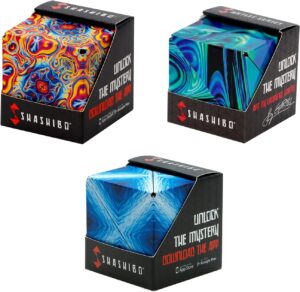Key Takeaways
- Origami has deep spiritual roots in Buddhism and Taoism, embodying concepts like impermanence and balance.
- The practice of origami teaches lessons about embracing simplicity and focusing on essentials in life.
- Origami encourages mindfulness and presence, offering a respite from the fast-paced modern world.
- The art form reflects our connection to nature and our place within the larger ecosystem.
- Origami can serve as a meditative practice, unlocking insights and fostering personal growth.
The art of origami, deceptively simple in appearance, draws from profound spiritual roots. Its practice connects us to the contemplative traditions of Buddhism and Taoism, which find deep meaning in simplicity. The unfolded blank sheet represents infinite possibility. Making the first crease imposes order, differentiating the inside from the outside. Additional folds construct form from void, and complexity from simplicity.
Yet origami also illustrates that with slight adjustments, one figure dissolves and a wholly new one unfolds from the same paper. There is an innate connection and harmony underlying all origami forms – they are temporary manifestations of the underlying unity. The paper guides the folder’s hands into this realization. By observing deeply and working with care, we comprehend the medium’s nature. The paper itself demonstrates principles to follow: flexibility, humility, and receptiveness.
Table of Contents
The Spiritual Roots of Origami in Buddhism and Taoism
Origami carries spiritual meaning in East Asia, used in religious ceremonies and formal occasions. Practicing origami builds patience, precision, focus, creativity, and dexterity. But origami embodies philosophical ideals central to Buddhism and Taoism.
Buddhism
- Impermanence: Origami represents existence’s impermanence, phenomena endlessly arising and dissolving. Yet through change, an unchanging universal perfection remains – all unified as temporary manifestations of infinite potential. Origami shows the way harmony emerges from flux. Every fold links to the next in an endless chain of causation. All apparent dichotomies unite through shared paper sources. Nothing stands wholly isolated or independent.
Taoism
- Polarity, Cyclicity, and Balance: Origami governs concepts of polarity, cyclicality, and balance. The taijitu symbol of yin/yang, dark/light, and receptive/assertive finds embodiment in origami’s crease patterns. Four cardinal folds represent four seasons, elements, and directions. Forms emerge, flourish, and dissolve in nature’s rhythmic cadence – initial folds leaving traces behind until resetting the paper into undifferentiated emptiness once more. For Taoists, origami reflects existence birthing multiplicity from voidness yet ever-circling back to oneness.
Living in Harmony Through Paper’s Guidance
Embracing Emptiness and Simplicity
Origami starts with negative space – the unfolded paper full of potential. Early folds structure the gap, differentiating inside/outside, and establishing form. Yet between delineated facets space remains. Master folders understand the voids left between creases matter as much as the folds themselves.
- Practicing Emptiness: We too must embrace empty spaces in our hurried lives. Punctuating activity with inactivity – mindful breaks, staring out windows, purposeless wandering. Crisscrossing days with constant busyness cramp lives, even as obligations expand. Regular white space restores perspective on what matters.
- Minimalism and Simplicity: Emptiness breeds possibility, where we assumed only dullness. Unpacking neglected reservoirs of time and attention unveils days in a new light. Simplicity orients vision toward overlooked beauty. Much wisdom resides not in what we add but subtract. Openness clears space for unfolding.
Focusing on Essentials
In origami, sparse folds evoke entire animals via elegant economy, with minimal lines carrying maximal meaning. But excessive folding entangles grace in clutter. Well-placed folds should serve the form’s essence.
- Clearing Distractions: Modern consumerism burdens lives with trivialities and minutiae – endless gadgets, accessories, and upgrades. The media stokes anxiety about what we lack and remains forever out of reach. Yet cutting clutter spotlights life’s basic purpose once more. As in origami, subtracting unessentials is creation’s cornerstone. Extraneous stagnation sheds, bearing scaffolding for a purposeful life.
- Finding Meaning in Simplicity: Through artful minimalism, origami and deeply lived life reveal that by training sights solely on what most matters, space emerges for meaning itself. It is the unfilled that fills.
Clearing Physical and Mental Clutter
Over-folded origami grows too densely creased, limiting next forms. Artists then revisit the early stages, relaxing the medium into receptive openness once more.
- Releasing Rigidities: Mental clutter also accumulates over time into limiting rigidities – assumptions that narrow choices. With excessive acquired baggage, we lose innate wisdom. Thus periodic clearing brings self-reflection, surrendering rigidity around biases and belongings no longer serving greatest hopes. Just as origami forms collapse and paper returns to freedom, we shed encrusted habits and rediscover authentic yearnings.
- Decluttering for Inner Peace: Additionally, physical clutter stymies mental clarity. Research confirms disorganized homes hamper motivation and cognitive functioning. An overstuffed environment replicates within consciousness. Shedding unused possessions, optimizing space, and giving unused items new life lift spirits along with surroundings. Outer order sustains inner peace.
Through conscious shedding of inner and outer excess, return to original simplicity unfurls.
Seeking Nature’s Guidance
Nature guides origami artistry. Meticulous study of organisms’ structure undergirds lifelike form. But more essentially, origamists appreciate nature’s ingenious use of constraint in sculpting splendor itself. Limits are raw materials. Seasonal cycles pace glorious ecological tales. By focusing art within paper’s fixed boundaries, nature’s essential lesson emerges: fully know a medium’s properties to unlock its latent grace.
- Humility before Nature: Great origamists dwell in humility before nature’s artistry. Long hours mastering paper teaches that understanding any system’s rules allows one to work effectively within them. Straining against intrinsic laws fails; seeking harmony succeeds. Insight unfolds by accepting limitations. Through origami, we remember the whole living planet is itself nature’s gorgeous unfolding art – and we merely fold within its epic sweep.
Understanding Our Place in Nature’s Web
Origami depends wholly on its paper source. An intricate figure links utterly to its underlying medium. Should the sheet tear or come apart, the origami irrevocably fails. This reliance of each fold on the integral whole mirrors humanity’s embeddedness within nature’s fabric. Just as origami links to paper, human society relies on Earth’s healthy functioning to sustain civilization. We require clean air and water, rich soil, and vibrant ecosystems to support days and years. Should these systems destabilize past critical thresholds under pollution, climate change, and extinction, human prospects likewise diminish. However conceited we consider ourselves as discrete, reality reveals profound ecological interbeing – our fate hinges directly on the biosphere’s balance.
- Biospheric Conscience: Seeing ourselves as strands within nature’s vast unfolding web in space and time fosters urgent biospheric conscience. Each small choice alights butterfly wings – paper products purchased, foods consumed, transport modes taken. Local acts beam globally across the planet’s skin. Origami life lessons make the implications of conscientious folding of human activity within Earth’s operating limits vividly and creatively clear.
Unlocking Insight Through Mindful Folding
Slowing Down into Mindful Presence
Beyond manual dexterity, complex origami demands total presence without distraction. An origami artist’s gaze lingers meditatively over each unfolding crease and plane. Haste risks tears; racing ahead without precision dooms form. Origami pace offers respite from frenetic speed chasing quantity over quality. Folding well means fully slowing into the paper’s subtle topography, finding truth in tiny details.
- Surrender to Gradual Progression: When impatience arises, the medium itself demands surrender to gradual progression, not rushing unfinished stages. Thus origami builds focus – saying “no” to multitasking fragmentation so attention penetrates flow fully.
- Reclaiming Ancient Rhythms: Paper folding confirms across generations that accomplishing anything substantial relies on mindful patience, not hurrying. Origami returns modern minds to ancient natural rhythms present in calm focus itself, not a harried distraction.
Reaching Mindful States
Meditative practices sustain mental serenity, self-knowledge, and awakened awareness. Mindful presence enables resting in the now without clinging to the past or future. Folding paper likewise induces trance-like states from hand motions’ fixed repetitive precision. External awareness narrows to the paper’s tactile qualities. With practice, origami folds consciousness into more tranquil planes.
- Scientifically Proven Benefits: Indeed neuroscience now recognizes meditation’s benefits from origami’s sustained practice. Demanding focus reduces stress while increasing peace, insight, and attentional skills. Hand-eye coordination taps the brain’s primal parts, freeing intuition. Creative discovery then sparks, fluttering possibilities across conscious thought.
- Sanctuary from Information Overload: An origami session crafts sanctuary from information overload and deadline dominance. Sensory perception shifts from rapid intake to careful tactile calibration. Eyes travel centimeters, not meters. A single sheet contains infinite worlds.
Channeling Insight Through Paper
The creative process reveals concealed truths. Origami immersion forms conduits for subconscious realms to overflow intuitively through the paper into waking cognition. New geometries manifest unexpected harmonies – patterns underlying all bodies in motion, echoes between fern fronds and nautilus shells. Logic alone cannot plan such epiphanies arising through matter’s deepest structures revealed in paper.
- Unveiling Personal Understandings: Origami also unlocks personal understandings beyond verbal reasoning. Hands awaken slumbering intelligence dormant since childhood. Kinesthetic learning recaptures filtered experiences. Physiological perceptions well up buried memories. What we know but cannot articulate springs into tangible existence through paper, kindling insight.
- Preverbal Communication: When origamists instill artworks with symbolic meaning, embedded intention transmits through aesthetic cues directly into viewers’ consciousness, retuning moods without resistance. An origami gift often communicates emotions beyond words. Thus origami offers intelligence operating through preverbal channels still potent for realizing certain life truths.
Unfolding Transformative Wisdom
Origami begins and ends with empty sheets, infinity held in blankness. Out of the void, forms manifest through applied imagination. Inventing new folds pushes limits, elevates skills, and sharpens minds. Models then collapse, awaiting potential’s rebirth. Yet no creative journey imprints without leaving changed consciousness in its wake. Each dissolution prepares fuller flowering upstream.
- Embracing Cycles of Creation and Surrender: So too we travel cycles of housing creation and surrender. Visions are realized through projects and bonds eventually deconstructing. Buildings, careers, and even family units stand as temporary vehicles for self-expression. Though outward manifestations perish, the wisdom gained readies deeper creative participation at each turn of life’s spiral.
- Courage to Begin Anew: Remembering no inspired effort fully disappears, only its form, nurtures courage to commence again. Between vast empty sources and intricate manifestations reside essential unity. Material may perish; underlying spirit proves indestructible. All begins and ends in timelessness.
Conclusion: The Peace Origami Offers Modern Minds
Despite ancient roots, origami sustains deep modern relevance. As life’s pace and complexity accelerate, origami’s contemplative practice brings stillness and presence. An origami figure elegantly transforms chaos into orderly form – assembling fragmented parts into a cohesive expression that seems to breathe. Origami’s gentle magic returns awareness toward simplicity from clutter, untangling strands of unnecessary complexity and stealing life force. Around this touchstone practice, frayed nerves may find sanctuary.
- Beyond Aesthetic Value: Beyond decorative allure, origami offers profound teachings in mindfulness, patience, respecting materials, and the ordered beauty underlying visible surfaces. Origami elegantly mirrors existence following nature’s cycles. Flowers bloom, seed, fade, and return according to seasonality’s rhythmic intelligence. So too origami’s transient paper forms model humanity within the web of life – emerging, changing, and dissolving according to laws that despair not but compose all into wider harmony.
- Beholding an origami crane, we glimpse an essence beyond commodity or possession. Instead here stands an attentive way of engaging the creative potential within each moment before passing on. For at the heart always dwells stillness – the ever-present source out of which the next form will unfold when the time arrives. Origami’s necessary surrender whispers of much wider wisdom. May gentle lessons guide our human return toward living lightly on this earth.
Recommended Origami Resources
If you enjoyed reading this article and would like to further explore the world of origami, here are some recommended books to get you started:
“Zen Origami: 20 Modular Forms for Meditation and Calm” by Maria Sinayskaya – This origami book comes with 400 high-quality sheets of origami paper and teaches 20 beautiful modular origami models to help induce a meditative state and calm the mind.
“Origami from Angelfish to Zen” by Peter Engel – This beautifully written and richly illustrated origami book explores the secrets of Japanese paper folding, origami theory, and history, and provides instructions for 24 advanced origami models.
“Senbazuru: One Thousand Steps to Happiness, Fold by Fold” by Michael James Wong – This inspiring book brings the tradition of senbazuru, folding 1000 paper cranes, to life as a peaceful philosophy for slowing down, healing the soul, and finding your path to happiness through mindful origami practice.




